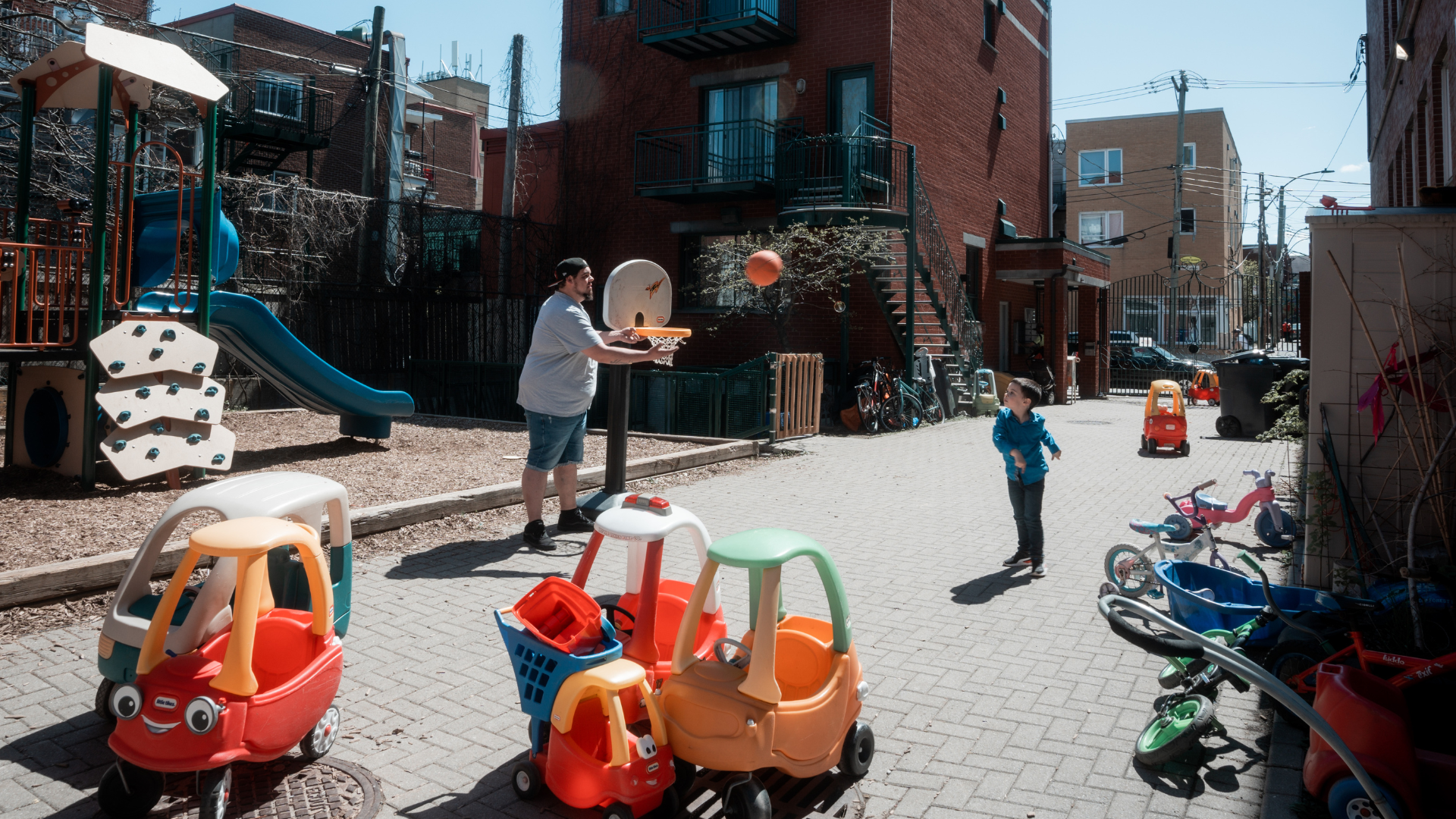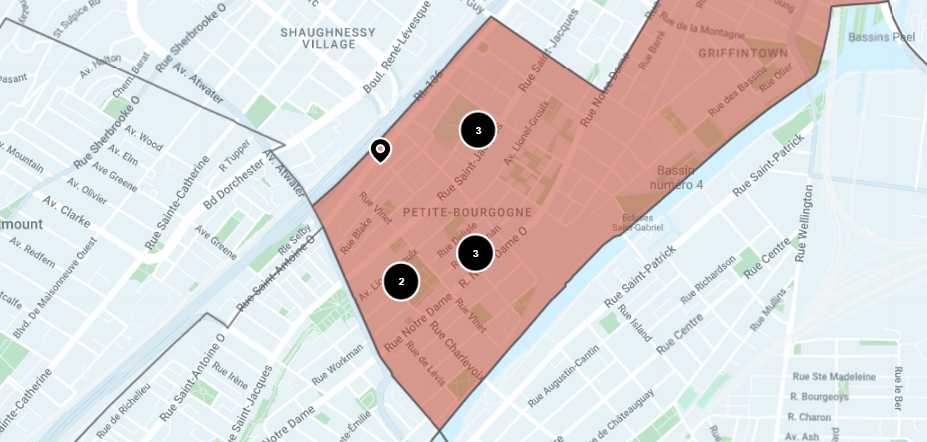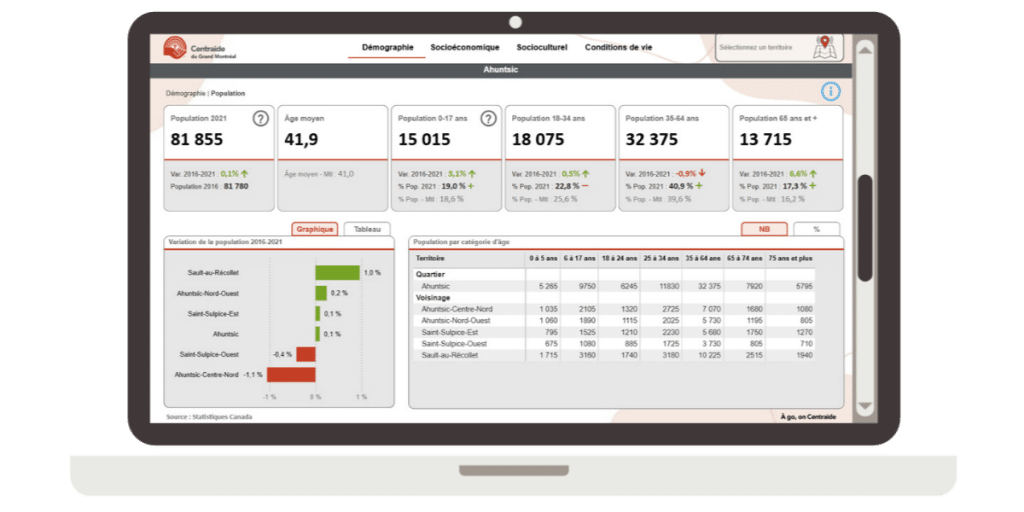
Petite-Bourgogne
Snapshot of
Petite-Bourgogne

Discover key facts
👨🏻🦱 Population – strong growth and presence of young adults
Between 2016 and 2021, Petite-Bourgogne experienced one of the highest population growth rates on the island of Montreal (40% versus 3% for the city), partly due to the integration of the Griffintown sector, which represents nearly half of the neighborhood’s population. Young adults aged 18–34 make up 38% of residents, compared with 26% in Montreal, while the shares of children (0–17) and seniors are well below the city averages. This strong presence of young adults is typical of central Montreal neighborhoods, including several in the Southwest.
👩👧 Single-parent families – strong presence
42% of the neighborhood’s families are single-parent, compared with 31% in Montreal, representing 950 families. Three-quarters of them live in the Petite-Bourgogne area (700 families), where the rate of single-parent families reaches 44%, compared with 38% in Griffintown.
👴 People living alone and solo seniors – strong presence
Petite-Bourgogne stands out with a rate of residents living alone of 29% (versus 19% in Montreal), reaching 37% in Griffintown. Among seniors, about half live alone in both areas, but the Petite-Bourgogne neighborhood has significantly more seniors in this situation (805 versus 165 in Griffintown).
📍 Poverty and inequality – marked disparities
As in Montreal overall, 11% of the neighborhood’s population is low-income, with 10% in Griffintown and 12% in Petite-Bourgogne. The neighborhood is experiencing strong gentrification: a quarter of its population now belongs to the top 20% wealthiest in Greater Montreal, which explains the sharp decline in low-income residents (-57% in five years) and contributes to pronounced inequalities. There are 2,315 low-income residents, more than 60% of whom live in Petite-Bourgogne.
✏️ Youth graduation – among the lowest rates in Montreal
Although few in number, secondary school students face significant graduation challenges. Their graduation rate, one of the lowest on the island, was 69% in 2023, well below the Montreal average (84%). This rate has declined over the past two years, from 75% in 2021 to 69% in 2023. Like several Southwest neighborhoods, Petite-Bourgogne has graduation rates below the Montreal average.
Nearly one-third (30%) of housing in the neighborhood is subsidized, representing the second-highest rate in Montreal, well above the city average (8 %). These include all units with rent determined based on income (social housing, HLM, Rent Supplement programs, etc.).

Dashboard
Consult this dashboard to access a wide range of demographic, socio-cultural/economic, and living-condition data.



